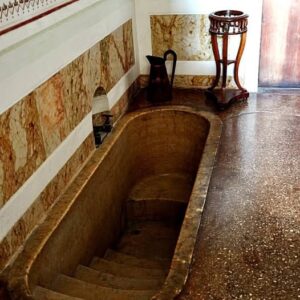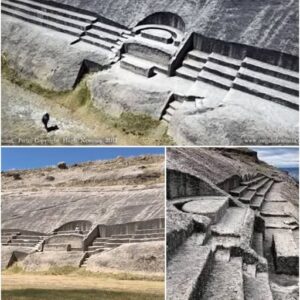The Library of Celsus, nestled in the ancient city of Ephesus, stands as a timeless monument to the intellectual prowess and architectural ingenuity of the Roman Empire. Originally home to a vast collection of more than 12,000 scrolls, this illustrious library was built in 114 AD as a tribute to Tiberius Julius Celsus Polemaeanus, a respected former governor of Ephesus. Ranking as the third-largest library in the Roman world, it held a position of prominence, rivaling only the renowned libraries of Alexandria and Pergamum.
The library’s grandeur was evident in its striking two-story facade adorned with intricate Corinthian columns and statues embodying wisdom, knowledge, and virtue. These embellishments transformed the building into a symbol of intellectual and cultural excellence, attracting scholars and visitors alike who sought to bask in its aura of erudition.

Tragically, in 262 AD, a powerful earthquake struck Ephesus, reducing much of the Library of Celsus to rubble. Despite the devastation, the facade miraculously survived, standing resolute against the tests of time. This resilience serves as a poignant reminder of the library’s enduring legacy, beckoning countless individuals to marvel at its architectural grace and historical significance.
Today, the Library of Celsus stands as a beacon of ancient wisdom, inviting visitors to trace the footsteps of those who once sought knowledge within its walls. The site’s rich history and architectural splendor continue to captivate audiences, offering a glimpse into the intellectual landscape of the Roman era.
In essence, the Library of Celsus in Ephesus stands as a testament to the enduring allure of knowledge and the enduring legacy of human achievement. Its majestic facade serves as a reminder of the importance of preserving our cultural heritage and learning from the wisdom of the past. As visitors flock to witness its beauty and immerse themselves in its history, the library remains a steadfast symbol of ancient wisdom that transcends the boundaries of time.





